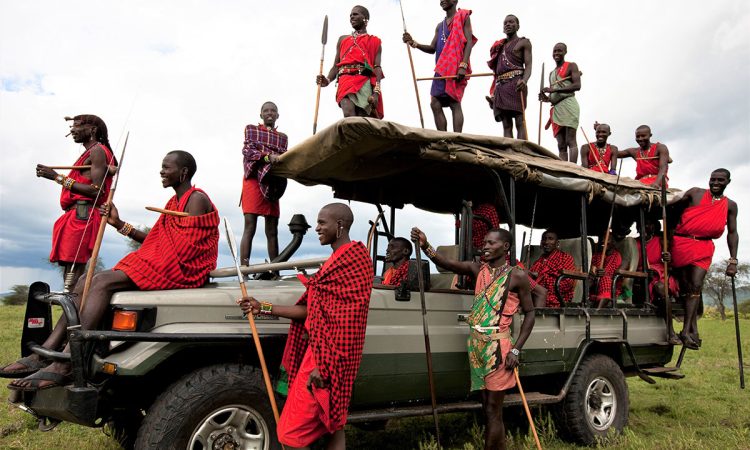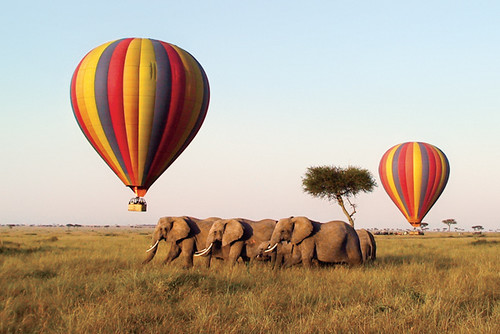Safari guide to Maasai Mara National Reserve Kenya : As African safari experts we understand that you have loads of questions while planning your safari in the Masai Mara. A safari at the world-famous Masai Mara National Reserve in southwest Kenya is an experience of a lifetime. It’s one of the best places on Earth to watch animals.

The reserve, referred to locally as just “The Mara,” is named in remembrance of the Maasai people, the region’s ancestors, and how they described the landscape from a distance. “Mara,” which means “spotted” in Maasai, is a fitting term for the areas marked by acacia tree rings, savanna, scrub, and cloud shadows.
Which month, though, is ideal for a Masai Mara safari? What is the price of travel to Masai Mara? For what is the Masai Mara safari renowned? How long should I stay in Masai Mara for? Find out everything you should know about going on a Kenya wildlife safari in the Masai Mara by reading on.
How Big Is Masai Mara?
The Masai Mara ecosystem covers an area of about 3,000 km2 in total that is under conservation.
The region is equally divided between many community-owned conservancies with shared, unfenced borders and the 1,500 square km Masai Mara National Reserve.
To the south, Tanzania’s 14,760 square km Serengeti National Park shares unfenced boundaries with the Masai Mara habitat.
The three main rivers that drain the reserve are the Talek, Sand, and Mara rivers. The Siria Escarpment of the Great Rift Valley, a 5,600 km long system of rift that extends from Ethiopia’s Red Sea through Uganda, Kenya, Tanzania, Malawi, and Mozambique, forms the western border.
Three-quarters (510 km2) of the Masai Mara National Reserve are located in the Mara Triangle on the western bank of the Mara River. On behalf of Trans-Mara County Council, it is run by the nonprofit group The Mara Conservancy. The Narok County Council is in charge of the remaining 67% of the national reserve, which is located on the eastern bank of the Mara River.
Why Go On A Safari In The Masai Mara?
1. Big Cats.
Many people are aware that Masai Mara is home to Big Cats, which include lions, leopards, and cheetahs. Filming for the BBC television series “Big Cat Diary” took place here.
Because of their exceptional adaptation to the flat plains of the area, cheetahs are among the most visible predators in the Mara.
They frequently look for viewing spots atop fallen trees, termite mounds, and even game drive cars! Witnessing the world’s fastest land mammal pursue its prey is an amazing sight on every safari in the Masai Mara National Reserve.
2. Great Wildebeest Migration Safari.
One of the most amazing natural events on Earth, the Great Wildebeest Migration, is another reason why the Mara is well-known throughout the world.
It is quite amazing to witness the massive migration of about two million wildebeest, accompanied by zebras, gazelles, and predators.
3. Natural Beauty Safari.
Natural beauty is a well-known feature of Masai Mara National Reserve. There aren’t many locations on Earth as stunning and genuine as the Masai Mara.
In fact, the safari in the Masai Mara is most likely what you have in mind when you dream of an African safari.
This is what Africa is all about: vast plains covered with sparse savanna, herds of grazers wandering along the horizon and halting in the shade of lone acacia trees during the heat of the day.
4. The Big Five Safari.
It is nearly a given that you will see Africa’s famous Big Five the buffalo, elephant, leopard, lion, and rhino in the Masai Mara National Reserve.
Lions, elephants, and buffaloes are really prevalent, and leopard sightings are also frequent, so you’ll be stumbling over them. There are black rhinos in the isolated Mara Triangle as well.
5. Mara River Crocodiles.
The unbelievably enormous Nile Crocodiles are another animal to watch out for while on a safari in the Masai Mara. They are visible in the Mara River.
Witnessing one of these ancient reptiles some of which are over 16 feet long catch and devour a zebra is indeed a spectacular experience as they wait for the migrating mammals.
Remarkably, during the annual wildebeest crossing, these crocodiles only feed once or twice a year. Some of these massive, mottled green apes are estimated to be over fifty years old!
6. Bird-Watching.
Birding aficionados are treated to a vast diversity of birdlife when visiting Masai Mara, in addition to the plethora of wildlife in the area. Over 570 bird species are thought to exist.
These include numerous vulture species, Secretary birds, kingfishers, Kori Bustards, Grey Crowned Cranes, the adorable Pygmy Falcon, Sooty Chat, and the stunning Lilac-breasted Roller, which is Kenya’s national bird.
7. Hot Air Balloon Safaris.
In addition to offering exhilarating 4×4 game watching, Masai Mara National Reserve is renowned for its unparalleled hot-air balloon excursions. You may sometimes glide across the sunlight at tree height to capture some incredible pictures.
There are moments when you climb higher, gaining a general perspective of the vastness of the plains and the early morning motions of the swarming herds. You are welcomed with a wonderful bush meal and champagne upon landing on the plains.

8. Masai People.
The genuine cultural encounters with the Maasai people, an indigenous pastoral group that is semi-nomadic and whose community’s border or are located inside the Mara, are another highlight of a safari in the Masai Mara.
They work as guides and staff members at many of the Masai Mara safari lodges that we utilize for our safaris. Additionally, it’s typical for safari visitors to visit their traditional communities or witness them in action in the savannah: women carrying firewood or water, men herding livestock.
9. Masai Mara Safari Lodges & Camps Safari.
The accommodations available in the Masai Mara are incredibly rich. In the Mara, accommodations vary from fuss-free mobile camps that follow the migration of the wildebeest to traditional tented camps and opulent, family-friendly resorts.
Awaiting you are eco-chic safari lodges with four-poster beds, infinity pools that overlook the African savanna, and sundowners with your favorite G&T.
10. Masai Mara Honeymoon Safari.
One of the most romantic safari locations in Africa is Masai Mara, which has a large number of lodges’ ideal for honeymooners and couples.
A honeymoon safari in the Masai Mara offers a plethora of activities, the most evident being the guided game drive. In the private conservancies, there are also walking and hot-air balloon safaris available.
A candlelit dinner for two or a private bush breakfast, where you are waited on and served in a lovely location apart from the camp or lodge, are additional options for those seeking a somewhat more romantic experience.
11. Masai Mara Family Safari.
For a family safari vacation in Africa, Masai Mara is an excellent choice.
This magnificent wilderness boasts a network of kid-friendly accommodations with knowledgeable and entertaining personnel.
Children of all ages will be mesmerized by the sight of elephants, lions, leopards, cheetahs, giraffes, hyenas, jackals, zebras, and enormous herds of antelope against picturesque savanna landscapes.
Along with kid-friendly activities like nature walks, treasure hunts, archery, fire building, storytelling, and special extras like kids’ adventure clubs, many Masai Mara safari lodges also provide these services. Teachers from the Masai people are genuinely captivating.


